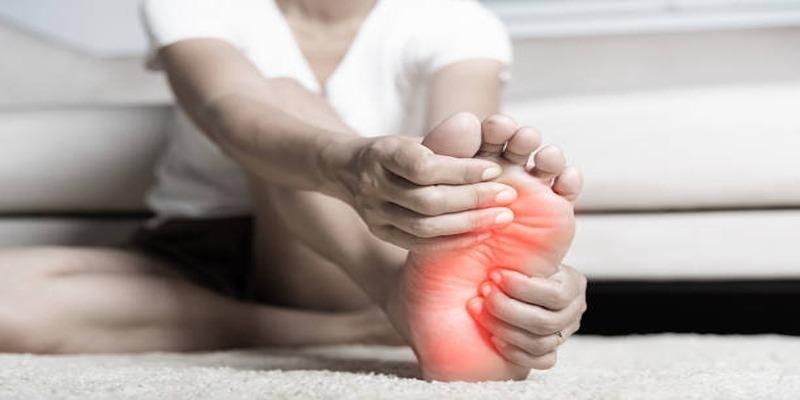Neuropathy and Restless Leg Syndrome (RLS) are the two disorders that can be easily mistaken because of their similarity of symptoms. This article will compare RLS and neuropathy in terms of their cause, symptoms, as well as management, to enable you further understand both conditions.
Overview of RLS and Neuropathy
Restless Leg Syndrome (RLS) is a neurological condition that consists of the uncontrolled desire to qualify the legs, which is frequently accompanied by some uncomfortable feelings. Instead, neuropathy entails the damage of nerve, resulting in pain, tingling or numbness, and the affected body parts are mostly the hands and feet. Although the two conditions have the ability to interfere in usual life, they have reportedly different underlying causes, symptoms and therapies.
Symptoms
It is important to understand RLS and neuropathy symptoms so as to know and manage the conditions. Their typical symptoms and their major differences are broken as below:
Symptoms of RLS / Neuropathy

Restless Legs Syndrome (RLS) is defined by an inability to stop a craving to move the legs that are typically accompanied by desirable feelings of itchiness, crawling or poking. These symptoms are generally worse in the evening or at night, particularly when resting or lying in a recumbent position, and are only relieved by exercising the affected area—with this relief lasting only as long as the exercise continues.
Symptoms of neuropathy, on the other hand, basically entail the ongoing tingling, burning, or numbing of the affected regions, usually the hands and feet. Symptoms of neuropathy are not always associated with the absence of activity or rest, as is in case with RLS. It is vital to acknowledge such differences, and this understanding can be used to tell these conditions apart and make the right choice of treatment and symptoms control measures.
Causes
At this point we are going to discuss the multiple causes of Restless Legs Syndrome (RLS) and neuropathy.
Underlying Causes of RLS
Restless Legs Syndrome (RLS) may come about due to multiple causes. Although the specific reason is not always well understood, studies indicate a possible correlation to imbalances in the levels of dopamine in the brain, which muscles are regulated by. In primary RLS, genetic predisposition has a major impact and in most cases it commonly occurs among families.
Secondary RLS, however, is also linked to some conditions like iron deficiency, and kidney disease. Some of the medicines or lifestyle interventions, such as drinking too much caffeine, also can worsen the symptoms.
Underlying Causes of Neuropathy
Nerve damage (neuropathy) has a highly diverse set of underlying relevant causes, depending on the type. The most common cause is definitely diabetes, which affects peripheral neuropathy in diabetes. Additional causes comprise vitamin deficiencies, especially in B vitamins, exposure to toxins, infection such as shingles as well as autoimmune diseases such as lupus or rheumatoid arthritis. Nerve trauma caused by physical trauma, and genetics such as Charcot-Marie-Tooth disease, are also causes of neuropathy.
How Causes Differ Between RLS and Neuropathy
Although both RLS and neuropathy deal with pain problems in the relationship of nerve activity, it is crucial to note that their causes are different. The increase is linked more to neurological causes, such as the dysregulation of dopamine (a neurotransmitter), and to indirect causes, such as iron deficiency or general bodily ailments.
The cause of neuropathy is, however, direct nerve damage usually due to chronic pathologies such as diabetes or physical trauma. Also, the RLS is not normally an outcome of structural nerve injury, which contrasts with the etiology that makes neuropathy. The study of such differences is paramount in the proper diagnosis and treatment of each.
Diagnosis
The diagnostic method of restless legs syndrome (RLS) as well as neuropathy also differs. How about taking a closer overview of diagnosis of each condition.
Diagnostic Methods for RLS
Patient history and clinical evaluation are the main methods by which Restless legs syndrome (RLS) can be diagnosed. The symptoms which are used by physicians include inability to control the urge to move legs, aggravation of symptoms during rest and alleviation after movement. The condition is confirmed with a help of such diagnostic criteria as the International Restless Legs Syndrome Study Group (IRLSSG). In those cases when sleep is severely disrupted, the use of sleep studies (e.g., polysomnography) can be made, but firstly, it excludes other sleep disorders.
Diagnostic Tests on Neuropathy
The diagnosis of neuropathy occurs through clinical investigation, medical history and diagnostic examinations. Sensation, reflexes as well as muscle strength are evaluated by neurologists and lab tests may reveal diseases such as diabetes or vitamin deficiencies. Nerve damage is identified by measuring the performances of nerves and muscles (electromyography (EMG) and nerve conduction studies (NCS). The imaging tests, e.g. MRIs or CT, can eliminate the structural problems to nerves.
Challenges in Differentiating Between the Two
RS may be hard to separate out of neuropathy because of the similarities of symptoms, such as pain in the legs. Characteristic of RLS are the desire to move the legs and find relief with movement- characters that are not provided in the majority of neuropathy. Neuropathy can frequently rule out numbness, especially tingling, or insensibility, uncharacteristic of RLS. This may happen when there is misdiagnosis particularly due to the similarity of the symptoms or a combination of the two conditions.
Treatment Options
The treatment of Restless Legs Syndrome (RLS) and neuropathy is different because of the different causes behind them. Lifestyle change education such as sleep hygiene, reducing caffeine and regular exercise can be used to manage RLS. Anticonvulsants or dopamine agonists could also be prescribed.
The treatment of neuropathy aims at addressing the underlying causes of the condition—including diabetes control—and alleviating symptoms with analgesics, topical treatments, or medicines that act on the nervous system, such as gabapentin. The significant distinction is that RLS treatments work to decrease the desire to move and sleep better whereas in neuropathy treatments an emphasis is placed on pain relief and addressing nerve damage. Effective therapies are possible because of accurate diagnosis.
When to Seek Medical Advice?

In case of RLS or neuropathy symptoms, you should consult a medical profession regarding them. They are able to do correct diagnosis of the underlying disease and give relevant treatment alternatives.
Moreover, when you are already being treated in either of the two ailments, yet you still experience some annoying symptoms consistently, it would be vital to discuss with your physician. They might require altering the treatment option you are presently using or check out alternative options in order to manage your symptoms better.
Conclusion
Restless Leg Syndrome and neuropathy are similar in terms of symptoms although they differ regarding causes, diagnostic criteria and treatment. Understanding such variations is important in order to be treated so as to. You can also pay attention to persistent leg discomfort, numbness and some pain, and stop being silent, come to a healthcare professional immediately.












